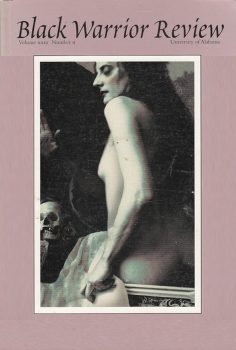A to Z Review: “The Sin-Eater’s Tale,” by Brennan Wysong

Brennan Wysong’s “The Sin-Eater’s Tale” opens with the introduction of the sin-eater in the post-Civil War south. The sin-eater’s task is to go around to the funerals of the boys whose bodies have been returned home after their deaths and force people to confront the evils that their sons and brothers and friends had done. Once all the sins were enumerated and the sin-eater wrote them down, he would charge the family and eat the paper, thereby giving the family closure and providing absolution to the dead for the evils they committed during their lives.
Reading the story, the sin-eater is, in some ways reminiscent of the role Orson Scott Card provided Ender Wiggin in Speaker for the Dead, a way of summing up a person’s life, warts and all, although Wysong’s sin-eater also offers a means of expiation for the dead. Once the sin-eater is paid and the sins are swallowed , the family and friends can pretend the cruelties and crimes of the dead no longer exist.

The story is related as a tale told to a granddaughter by someone who was not yet born when the sin-eater was performing his duties, which gives the story its own mythical feel. As the teller admits to adding additional details to the story, and notes that the story changed even as they were told different version of it, the fact of the sin-eater’s existence and what he did for the community fades into the background as the focus shifts to the way stories mutate as they are shared from generation to generation, trying to tell the truth, even if the stories are not entirely true themselves.
Unfortunately, while having a character tell a story allows Wysong to explore questions of story-telling, it also has a tendency to distance the reader from the story being told. Characterization becomes less important, but characterization tends to give the reader an emotional connection to the story. The sin-eater never is named, nor is anything personal revealed about him. The use of names in the story tends to be reserved to relating the crimes of the dead, which further serves to undermine an emotional connection to the story.
At the same time, Wysong’s decision to move away from the personal story of a family dealing with the sin-eater’s actions and what it means to their family and understanding of the deceased’s life and turn the sin-eater into an archetype is what elevates this story above a run-of-the-mill fantasy or horror story. However, since I’m currently also reading Heartwood, a collection of stories written in tribute to Robert Holdstock’s Mythago Wood series, it is possible that my reading of Wysong’s story is influenced by the other works.
Originally published in the Spring/Summer 1997 issue of Black Warrior Review, the story was reprinted in Ellen Datlow and Terri Windling’s The Year’s Best Fantasy and Horror: Eleventh Annual Collection. Wysong has published numerous short stories and poems, but “The Sin-Eater’s Tale” is his only entry at the Internet Science Fiction Database.
 Steven H Silver is a twenty-time Hugo Award nominee and was the publisher of the Hugo-nominated fanzine Argentus as well as the editor and publisher of ISFiC Press for eight years. He has also edited books for DAW, NESFA Press, and ZNB. His most recent anthology is Alternate Peace and his novel After Hastings was published in 2020. Steven has chaired the first Midwest Construction, Windycon three times, and the SFWA Nebula Conference six times. He was programming chair for Chicon 2000 and Vice Chair of Chicon 7.
Steven H Silver is a twenty-time Hugo Award nominee and was the publisher of the Hugo-nominated fanzine Argentus as well as the editor and publisher of ISFiC Press for eight years. He has also edited books for DAW, NESFA Press, and ZNB. His most recent anthology is Alternate Peace and his novel After Hastings was published in 2020. Steven has chaired the first Midwest Construction, Windycon three times, and the SFWA Nebula Conference six times. He was programming chair for Chicon 2000 and Vice Chair of Chicon 7.